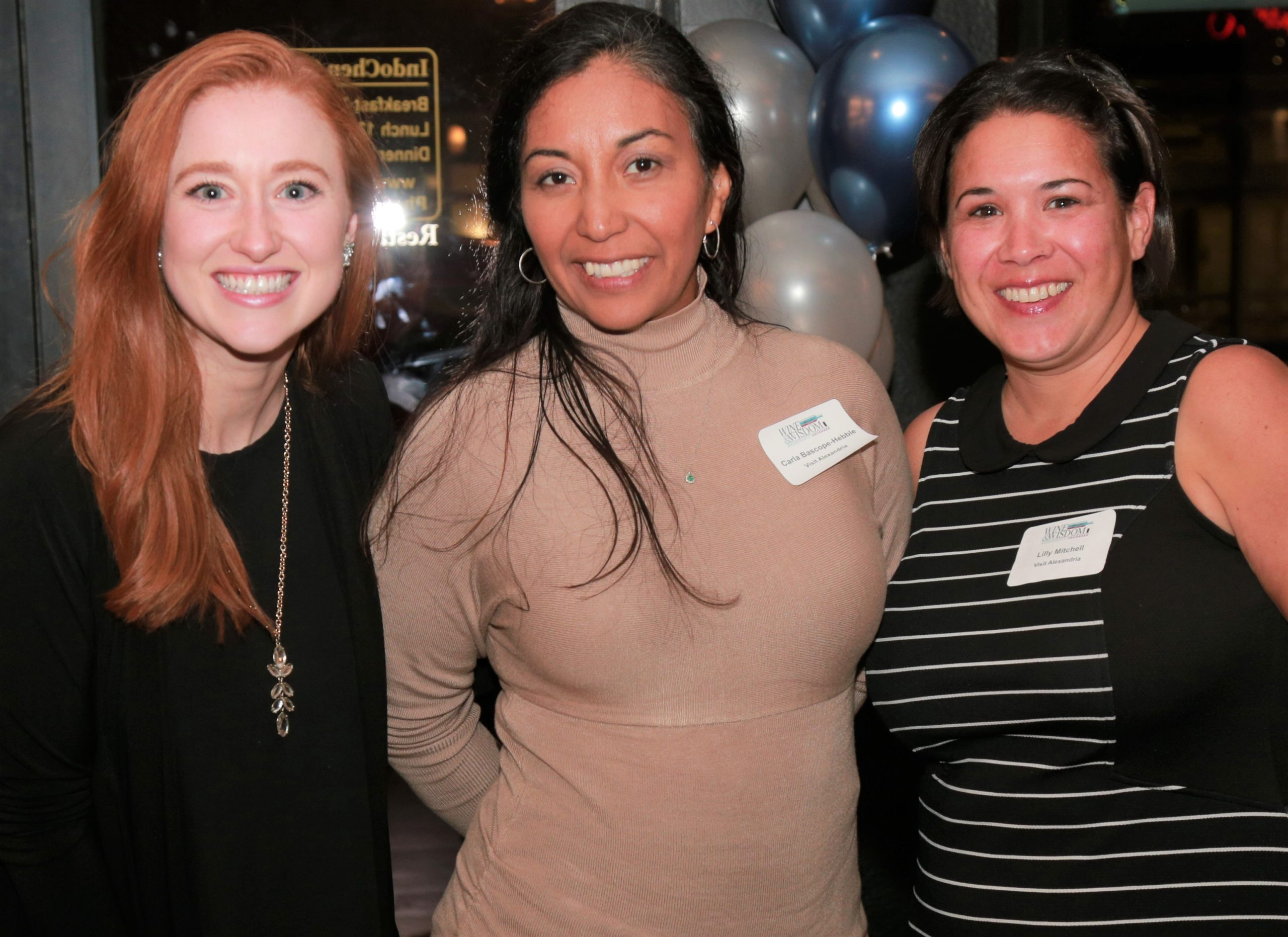Planning to shift your event online? Hear first-hand how Ann McLeod with the Society of American Military Engineers transitioned her massive event to a digital experience, as told to Nancy Rosenbaum, Business Development Manager for Visit Alexandria.
Q: When was your original meeting planned, and did it remain the same?
Ann: Yes, we originally had our in-person meeting scheduled for May 27-29, 2020 and kept those exact dates. We quickly made the decision to go virtual, leaving us with only about a six-week turnaround time.
Q: What was the primary focus of this meeting?
Ann: Because of our limited planning time, we realized there was no way we could replicate the in-person networking. Instead, we focused on the educational content as the primary focus.
2020 is our organization’s centennial so we had a lot of special things planned to celebrate that. We didn’t think we’d be able to do those celebratory things in a meaningful way virtually given the limited time to plan, so we focused more on the educational content.
Q: Did you send out an RFP?
Ann: No, we currently partner with eShow on registration, booths sales, abstract and speaker management, website…pretty much everything. They debuted a webinar product and we went with it! They partner with Big Marker, a web-based webinar platform. This was crucial, as we have a lot of government participants who have a lot of restrictions and many platforms which require you to download something to use it (such as Zoom, GoTo Meeting and WebEx).
Q: What was the biggest obstacle that you faced after you made the decision to go virtual?
Ann: Figuring out how to use the webinar platform and testing for government restrictions. Because we already use eShow, we didn’t have to reinvent a whole website and create new procedures for registration and the like.
In terms of the educational content, we really had to start over to get the speaker commitments because you have to reconfirm everything. We went to our speakers and asked if they were willing to speak virtually. Then, we rescheduled everything because the timing was different. We ended up with about half of the sessions that were originally planned as some speakers were unable to present virtually. You should never just assume that the speakers will be okay with transitioning digitally. You really do have to reconfirm everything.
The biggest challenge in planning was that we couldn’t just test thing on the fly, since we were not the license holder with Big Marker. We had keep going through eShow to set up test webinars and such, which took away a lot of flexibility, although eShow was great to work with and a true partner.
We did learn a lot about what works and what doesn’t. People connecting through VPNs had a lot of problems. Also, Chrome pushed out an update the weekend before our conference which also turned out to be a problem. Who would have ever thought of that?
Q: How many times did you do a rehearsal or run through?
Ann: We had test webinars several times, but we never had a “dry-run” of every session due to having 55 total sessions. We did have a rehearsal for each of General Session a week ahead, four total, which of course all had to be coordinated through e-Show which added to the complexity of scheduling. We held several “Speaker Orientation & Training Sessions” that helped familiarize them with the platform even though they couldn’t practice on it themselves. And for each session, speakers were able to log into their session up to one hour early, allowing them to test things out.
Q: Did you have staff help?
Ann: We had a core team of four, including myself.
Q: Did you have anyone certified as a Digital Event Strategist?
Ann: Not before, but we started the process with one staff person who completed the certification right after the meeting.
Q: Did you realize any budget savings?
Ann: The expenses were much less because we did not have to pay for food and beverage, an off-site dinner, award dinners, etc. No GSC fees, signage, carpet, pipe and drape. No A/V costs. No staff rooms. No award costs. Speaker fees were the same but without travel costs, although next time, we may negotiate that because less of their time was used.
Q: Did you realize a cancellation fee at the hotel?
Ann: No, we were within the force majeure window.
Q: Did your registration attendance increase?
Ann: No, it was the same, but the people who came were a different demographic than we normally get. For example, we typically have 18-20% government attendees, but that percentage went up to 35%.

Image Credit: Unsplash user @thisisengineering
Q: What worked well, and what were your key takeaways?
Ann: We worked really well with eShow because of our existing registration relationship. They were just as invested in the process, and everyone had the same learning curve to do the quick turnaround.
It is never going to be perfect, just like onsite with microphones not working—things happen.
We sent out a speaker survey ahead a time asking: Do you have the proper equipment? Are you limited by camera or headphone use? We shipped what they needed ahead of time with a pre-paid label for return. Fortunately, we had the budget to purchase some of these items, although stock was limited due to everyone else buying the equipment and purchase limitations because of the pandemic.
We had two staff assigned to support each live session. At first, some people thought this was overkill, but it ended up being great. Yes, some folks’ internet went out, and monitoring chats and Q&A and starting videos was too much for one person to do. We created checklists for staff–what to do during the pre-session run through, how to do a quality review of slides, what you need to do after the session. Our staff found these to be helpful in completing their assignments.
Finally, we realized we’d need a great customer service plan in place for when we went live. We had three ways for people to get help—email, phone, or chat. For the phone, we figured out how to reconfigure our phone system, allowing people to dial one extension and have it ring at multiple people’s phones, and if everyone was busy, put callers into a queue. We found a chat widget to put on our conference and organization websites so people could just chat us with their question, which worked great. Of course, it turned out that many people’s problems were similar. The frustrating part was when someone had problems that we couldn’t solve….You have to realize you have no control over the systems in their home or office, and sometimes you just have to apologize and move on.
Q: What would you do differently?
Ann: I kept saying, “We are building the plane while we’re flying it.” It was starting from scratch and in unfamiliar territory. If I had to choose something, I’d say we’d try to simplify our communications to registrants and the way we trained staff (our entire staff helped execute during the live event). And personally, I would have purchased blue-light glasses at the get-go. Gosh, my eyes hurt when it was all over!
Ann McLeod is director of meetings, membership and business development at the Society of American Military Engineers.
Nancy Rosenbaum is a seasoned hospitality professional with a career that spans almost 30 years. From working a front desk to leading a meeting planning team, Nancy has hit all sectors of the industry. With a focus in business strategy, Nancy has positioned herself with a solid foundation in sales, destination marketing, hotel operations, contracting, negotiation and meeting planning logistics. As a contributor to industry trade publications, Nancy has reached out to many of her colleagues during this COVID era to learn more about how meeting planners are grappling with the ever-changing environment. Currently, Nancy is consulting with Visit Alexandria in their Meetings and Events department.
Image Credit: Carla Bascope-Hebble for Visit Alexandria








